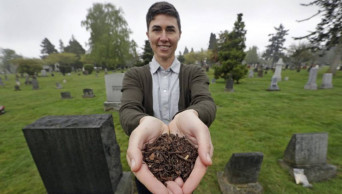Others
Natural breeding of rare crane species first recorded at Yellow River Delta reserve
Jinan, June 22 (Xinhua/UNB)-- Baby red-crowned cranes have been recently spotted foraging in the Yellow River Delta National Nature Reserve, the first recorded natural breeding of the rare species in the area.
Most young Chinese oppose arranged marriage: survey
Beijing, June 22 (Xinhua/UNB)-- A recent survey shows that more than 61 percent of Chinese young people oppose arranged marriage, expecting their parents to only give suggestions when finding a spouse.
7 ways to build your child's vocabulary
New York, June (AP/UNB) - If you want your child to have a rich and fulfilling life, one of the best things you can do is help build your child’s vocabulary. Research shows strong language ability is associated with a number of positive things, including happiness, friendships, connections with family, academic success and a satisfying career.
Italian woman who was Europe's oldest person has died at 116
Milan, Jun 19 (AP/UNB) — A 116-year-old Italian woman who authorities say was the oldest person in Europe and the second oldest in the world has died.
Where US home affordability is the worst
Washington, May 24 (AP/UNB) — Living by the beach is becoming even more cost prohibitive.
Washington is 1st state to allow composting of human bodies
Seattle, May 22 (AP/UNB) — Ashes to ashes, guts to dirt.
1 year after wedding: Harry and Meghan have new home, son
London, May 18 (AP/UNB) — It's been an eventful first year of marriage for Prince Harry and the former Meghan Markle, now known formally as the Duchess of Sussex.
Rock band Arbovirus perform at launching event of their latest EP
Dhaka, Apr 27 (UNB)- Country’s renowned rock band Arbovirus has performed at the launching event of their latest EP (Extended Play), which was observed on today (27th April, 2019) at the GP House, Bashundhara.
Thai oil rig workers rescue dog swimming 135 miles offshore
Bangkok, Apr 17 (AP/UNB) — A dog found swimming more than 220 kilometers (135 miles) from shore by workers on an oil rig crew in the Gulf of Thailand has been returned safely to land.
Fisher-Price recalls sleepers after more than 30 babies died
New York, Apr 13 (AP/UNB) — Fisher-Price recalled nearly 5 million infant sleepers on Friday after more than 30 babies died in them over a 10-year period.



















